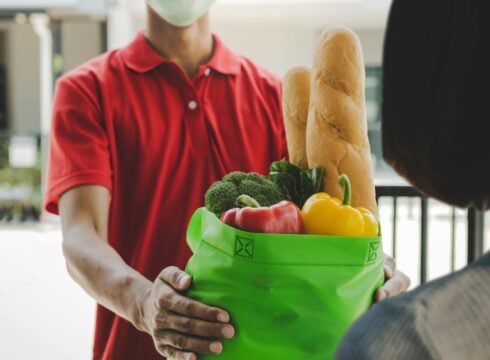SUMMARY
Grofers has partnered with 600 new local and FMCG brands and doubled the number of sellers on its platform
The company has seen a 60% increase in GMV and 40% increase in basket size during the lockdown
The Indian online grocery market could make $3 Bn in sales this year, which would be a 765 hike in revenue from last year
Inc42 Daily Brief
Stay Ahead With Daily News & Analysis on India’s Tech & Startup Economy
Amid growing competition in the online grocery delivery space after the entry of new players such as JioMart, Grofers is reported to have tied up with more than 600 new regional and local consumer goods brands. The new tie-ups have effectively doubled the number of sellers on the platform, part of the store’s strategy to offer significantly higher discounts to its customers.
Grofers will offer 20-50% discounts during the nine-day sale period, at least 15% higher than it did in its previous sale. “We have onboarded these brands that are at least 20% cheaper than leading brands even after discounts because that is our biggest pitch during grocery sales,” Albinder Dhindsa, co-founder of Grofers, told Economic Times.
During the lockdown, Grofers registered a 60% increase in its gross merchandise value (GMV), compared to pre-Covid-19 levels. Moreover, the company claims to have seen a 40% increase in basket size during the lockdown.
India’s Online Grocery Delivery Space Heating Up In Lockdown
To tap into the demand for on-demand delivery of groceries and other household essentials, ecommerce players such as Flipkart and Amazon have also entered the space. Flipkart is setting up a chain of ‘dark’ stores for its hyperlocal service ‘Flipkart Quick’ to allow the customers to get their deliveries within two hours of ordering. For the first phase, Flipkart will be facilitating the sales of 2,000 products across several categories — grocery, fresh, dairy, meat, mobiles, electronics accessories, stationery items and home accessories. It will also be onboarding neighbourhood or kirana stores onto its network, the company had announced.
Similarly, in April, Amazon pumped in INR 284 Cr into Amazon Retail, which delivers groceries and other household items on the online marketplace. With rising demand and competition, the players in the sector are consistently trying to distinguish themselves from their competitors. With Flipkart Quick, the company promised delivery of items within two hours of placing orders. Now Swiggy, with the launch of InstaMart, has promised delivery of items within 30-45 minutes of placing orders. Similarly, JioMart, which launched its mobile application last month and has since garnered more than 1 Mn downloads on the Google Play Store, is trying to lure customers with a zero delivery charge on all orders, irrespective of the amount.
US-based market research company Forrester Research has noted that India’s online grocery market could make $3 Bn in sales this year, representing a whopping 76% hike compared to $1.7 Bn last year. The research firm has attributed this growth to the demand for fresh produce and staples during the nation-wide lockdown.
Grofers Had A Profitable Lockdown
Grofers’ plans for trumping its competition have also been afoot for some time now. Inc42 reported in April that the online grocery store was looking to invest $50 Mn to strengthen its supply chain and private label category over the next two years. Of the total amount for 2020, Grofers has set aside $15 Mn for private labels as the company believes that it could contribute over 60% of its business during the current surge and subsequently up to $50 million to grow both its supply chain and private label business, over the next two years.
These investments will also be used to enable better distribution of Grofers’ private label — to enable more stores with its products — as well as to partner with more kiranas to streamline its delivery process. In December last year, Grofers cofounder Saurabh Kumar told Inc42, “We are aggressively growing our business and aiming to clock $1 Bn in revenue by the end of 2019 with a significant focus on our in-house brands in 2019. Our G-brands contribute 40% to our current revenue, and we plan to increase it to 60% in the coming years.”
According to an Economic Times report, Grofers generates nearly half of its INR 2,000 Cr annual sales from its private brands and labels.
The Covid-19 lockdown-induced surge in business has meant that Grofers has also advanced its plans for issuing an initial public offering (IPO), with the company now planning to go public by the end of 2021.
The company, which had initially planned to go public in 2022, expects to turn profitable this financial year. Grofers’ cofounder and CEO Albinder Dhindsa told PTI that the company has already turned operationally profitable in January 2020, and is on track to become EBITDA and cash positive by the end of this year.
Note: We at Inc42 take our ethics very seriously. More information about it can be found here.


